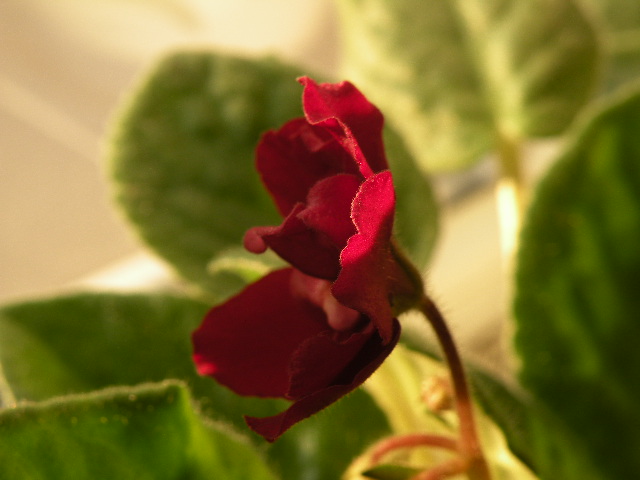The effects of macronutrients on the development of African violets
 They belong to the category of macroelements: Nitrogen (N), phosphoric (P), Potassium (K), Calcium (Ca), Magnesium (Mg) and Sulfur (S).
They belong to the category of macroelements: Nitrogen (N), phosphoric (P), Potassium (K), Calcium (Ca), Magnesium (Mg) and Sulfur (S).
Macroelements play a decisive role in the development of African violets. The lack or excess of these elements usually leaves its mark on the health of the older leaves as well as on the acidity of the soil.
The normal values of the Ph indicator beneficial to the development of African violets fall within the limits of 5.8-6.9 (neutral medium or with low acidity). At the slightest change in pH values, there is a 'blockage' of the assimilation and decomposition of these elements in the soil substrate.
Deci, The first thing to do to establish a diagnosis is to measure the pH of the soil mixture.
Effects of deficiency or excess of macroelements on the appearance of the plant:
Nitrogen:
Nitrogen deficiency, in the first stage, It is known by the yellow halo on the older leaves, in the second stage, the old leaves take on a lemon-yellow color from the bottom up. Nitrogen deficiency can be removed by administering urea ( spraying the leaf with a urea solution with a concentration of 0.05 – 0.1% or 0.5g per 1l water).
Excess nitrogen does more harm to the flower – it inhibits flowering, an abundant increase in leaf size is observed, The flower stem visibly thickens and acquires a conical shape, The growth of the plant is detrimental to flowering. Promotes the appearance of fungal infections.
Phosphorus:
Phosphorus deficiency – a purplish-red color of the lower part of the leaves for species that are not specific to this color, Inhibition of flowering, very poor flower and root development. It can be mitigated by the administration of phosphorus-based chemical fertilizers ( for example, Introduction of superphosphate into the soil mixture for planting the flower). For the development of the root system, the fertilizer Ferticare 10-5-26 produced by Kemira can be used. Excess phosphorus contributes to blocking the assimilation of iron by the plant, a rapid aging of the rosette. The plant is stunted, iron deficiency is observed if yellow chlorotic spots appear on the young leaves.
Potassium : With the help of potassium, the plant better assimilates the nourishing substances in the soil. Potassium-based fertilizers can be administered, However, this becomes dangerous for the violet if the amount of nitrogen in the soil is very small. Potassium deficiency is observed if chlorosis occurs in the first stage (The leaves and buds of the plant turn yellow), in the second stage – the edges of the leaves are burned, in stage three- marginal necrosis occurs (the edge of the leaf dries out).
Calcium: It is responsible for the variation of Ph values. Excess calcium makes the earth alkaline, Calcium deficiency makes it acidic, which prevents the plant from assimilating other minerals. To keep the pH within normal limits in the water, oxalic acid is added, vitamin C ( 1 ml concentrated ascorbic acid or oxalic acid per 10 l of water to increase the pH value by one unit.
Magnesium: Deficit – 1 stage- chlorosis, Stage 2 – Spotted necrosis (part of the leaf dries out and dies). The plant rarely suffers from excess magnesium.
Sulfur: Sulfur deficiency can be observed only at the stage of rooting and planting the plant, for example, in a mixture with perlite. If the earth has very little organic matter, sulfur certainly exists. Excess sulfur can be seen in the case of feeding the plant with chemical fertilizer. Sulfur persists in virtually every chemical fertilizer. If the plant's growth point has thickened or the turgidity of the first leaves is shrinking, then the plant was overfed. It is necessary to wash the soil substrate or change it.

